Model 31 - Flat front fender Period Images Home
Right-click on a picture, click "Open image in new tab", for an enlargeable view of some images.
1906 model year.
4 cylinder 50hp engine, 118" wheelbase.
There was a large variety of fender shapes and styles during 1906.
The earliest images of Model 31 show a flat front fender,
so it is
assumed that the lipped-front-fender cars were later production.
Some flat-front-fender pictures show lipped rear fenders.
Curiously, some lipped-front-fender pictures show flat rear fenders.
All images of flat-front-fender cars show a radiator with a short filler neck.
These radiators were suppkied by Whitlock Coolers.
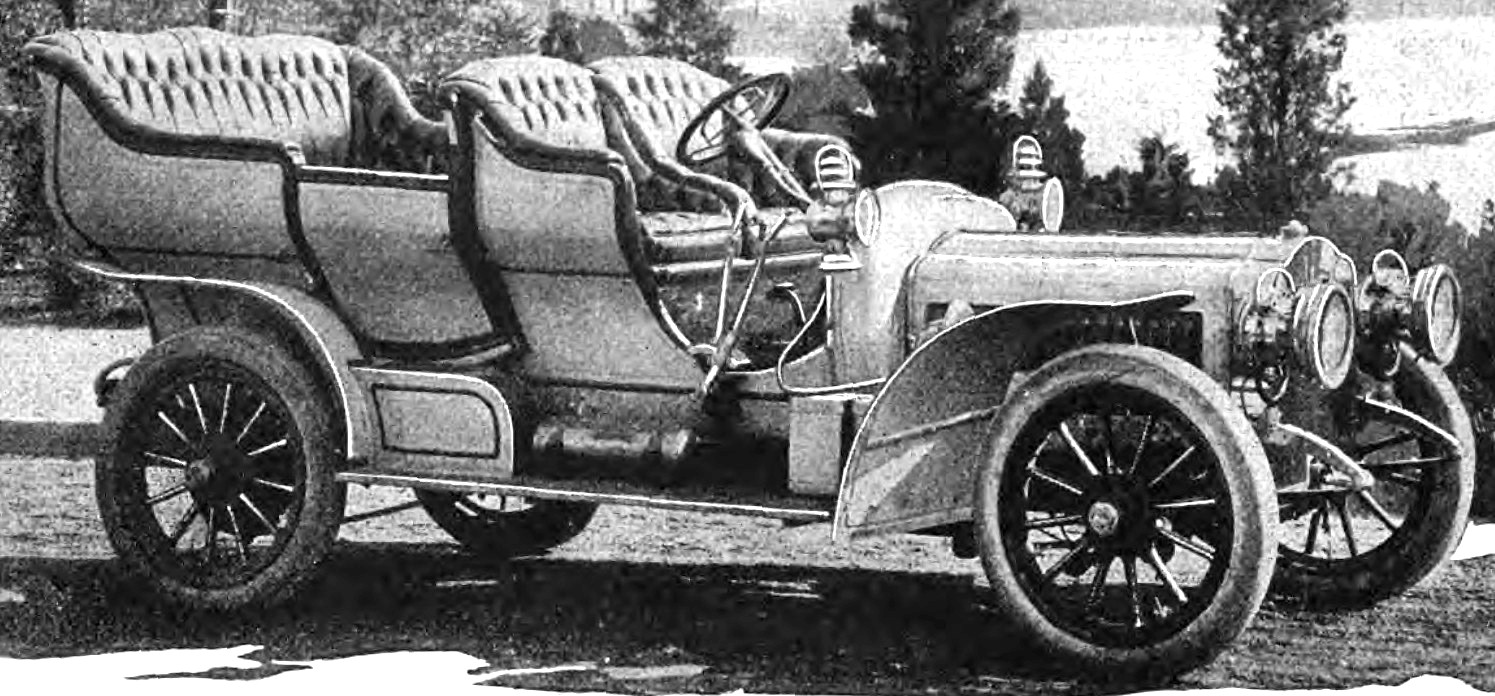
Motor Age, Nov. 9, 1905
This is one of the earliest dated photographs of Model 31.
Once again, this may be E. R. Thomas's personal development vehicle.
Other very early Model 31 images are of this same car.
Note these characteristics:
- flat, plowshare front fenders, with upswept tips
- contrasting louver panel in hood
- long chain box, extending forward of the rear door (like 1905)
- horn bulb mounted on steering column
- light paint with high-comtrast trim
The next 4 images are clearly the same car.
Note that the extra rear passengers sit on a bench seat instead of individual buckets.
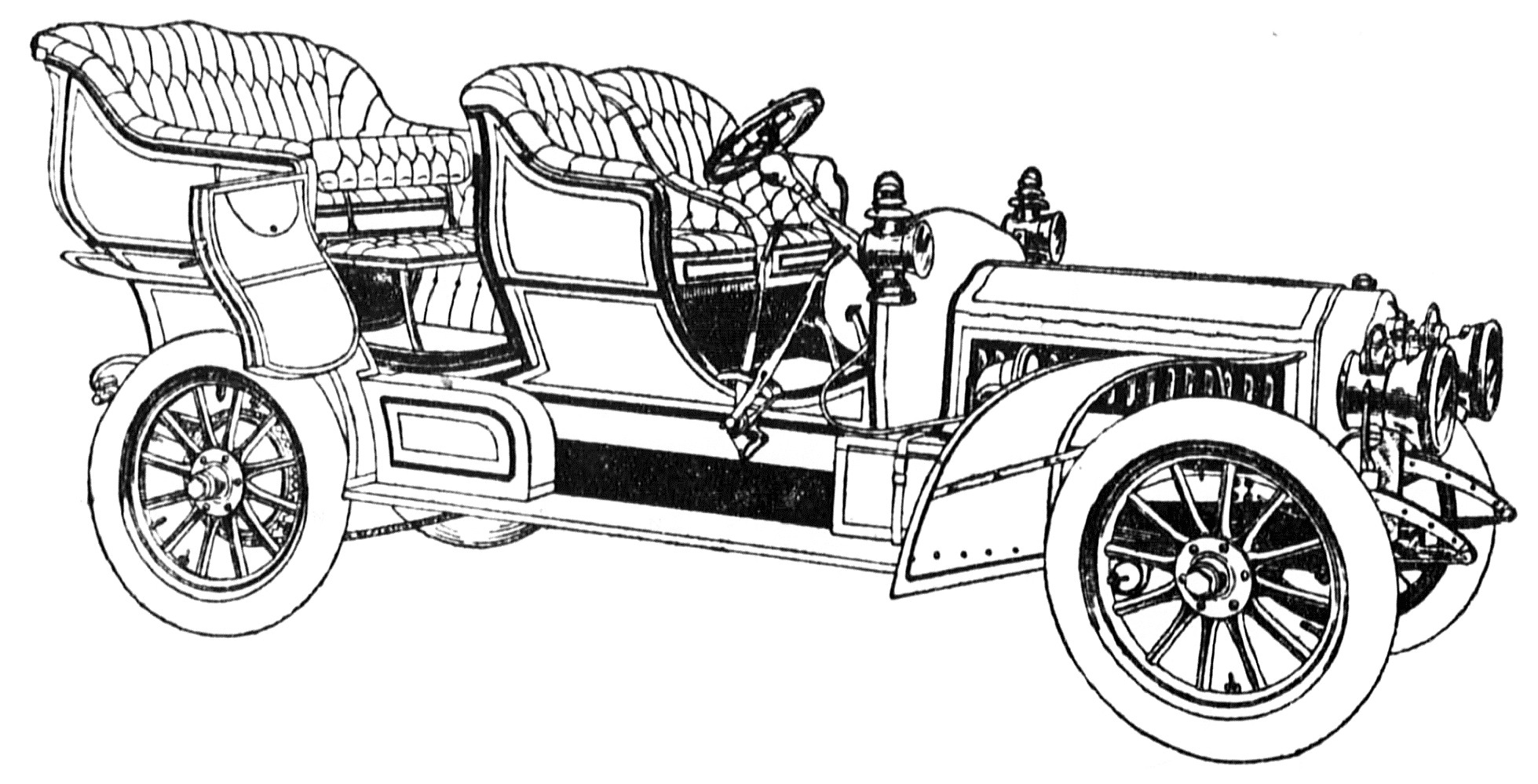
New York Sun, Nov. 19, 1905
This image is from a slightly different angle.
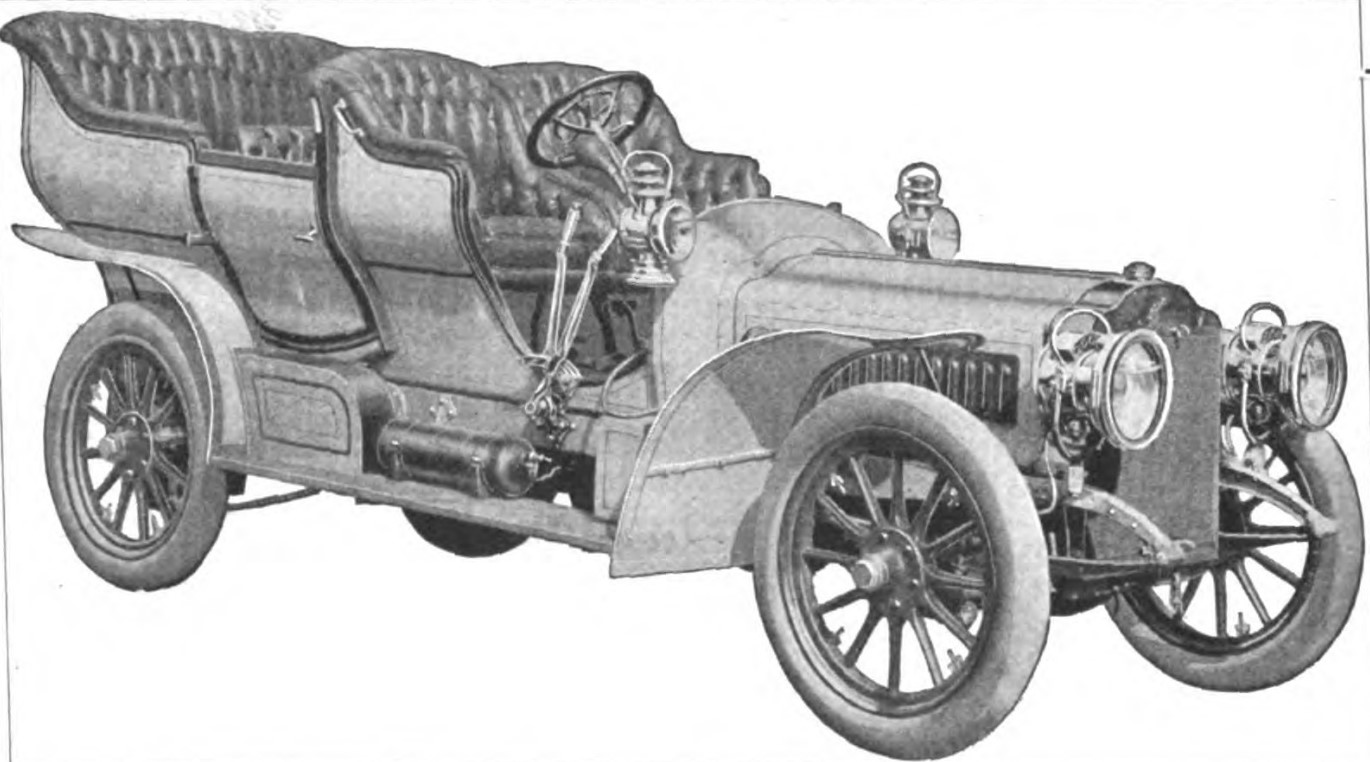
The Motor Way, Nov. 23,1905
A third angle, and a photograph.
The bench seatback is visible.

Motor, Dec. 1905
Back to the first photograph, this time clearly identified.
The next image may well be the same car.
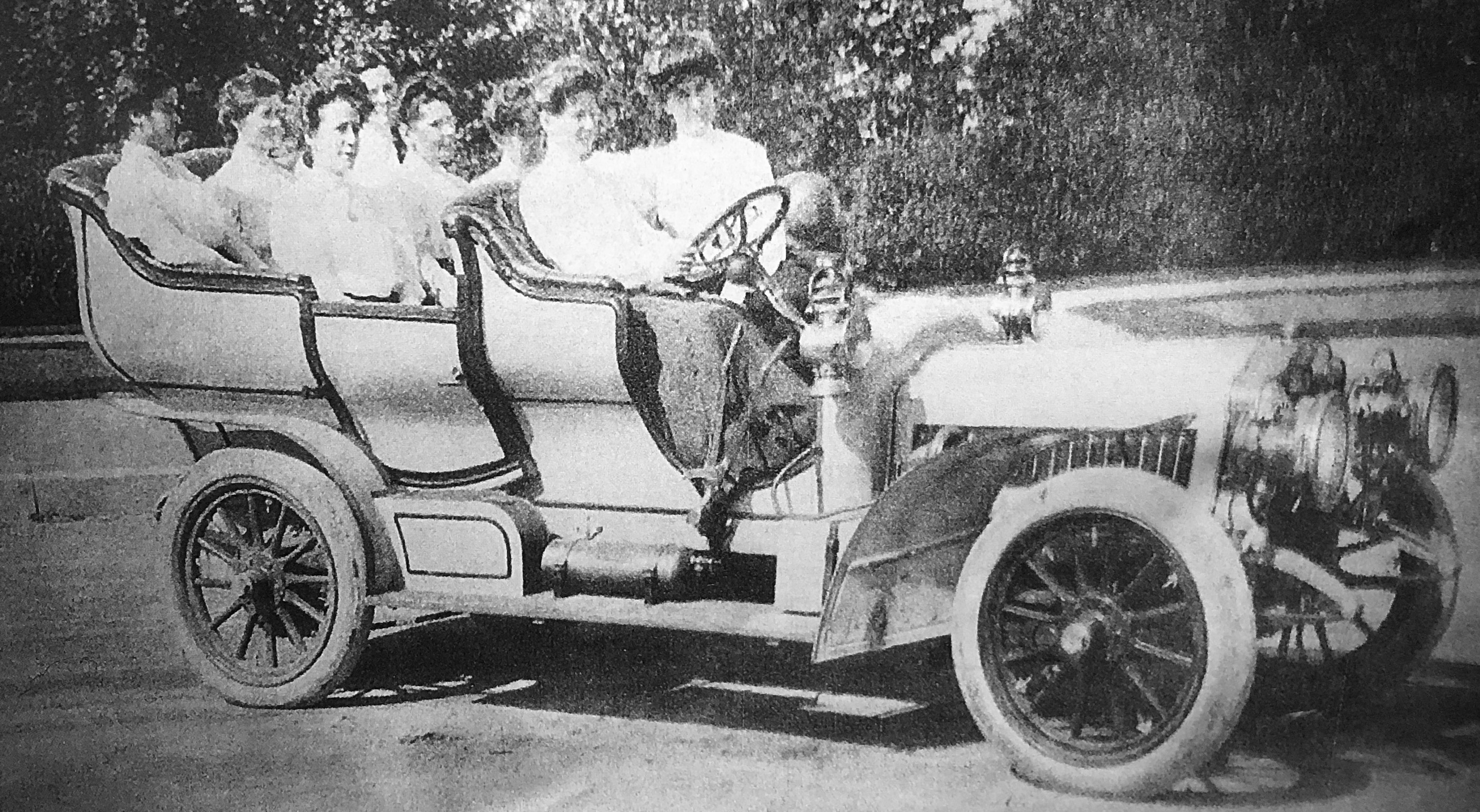
Mike Kaltenecker
E. R. Thomas and J. R. Koen applied for a second body design patent on Nov. 18, 1905,
and received #37,774 on Jan. 2, 1906.
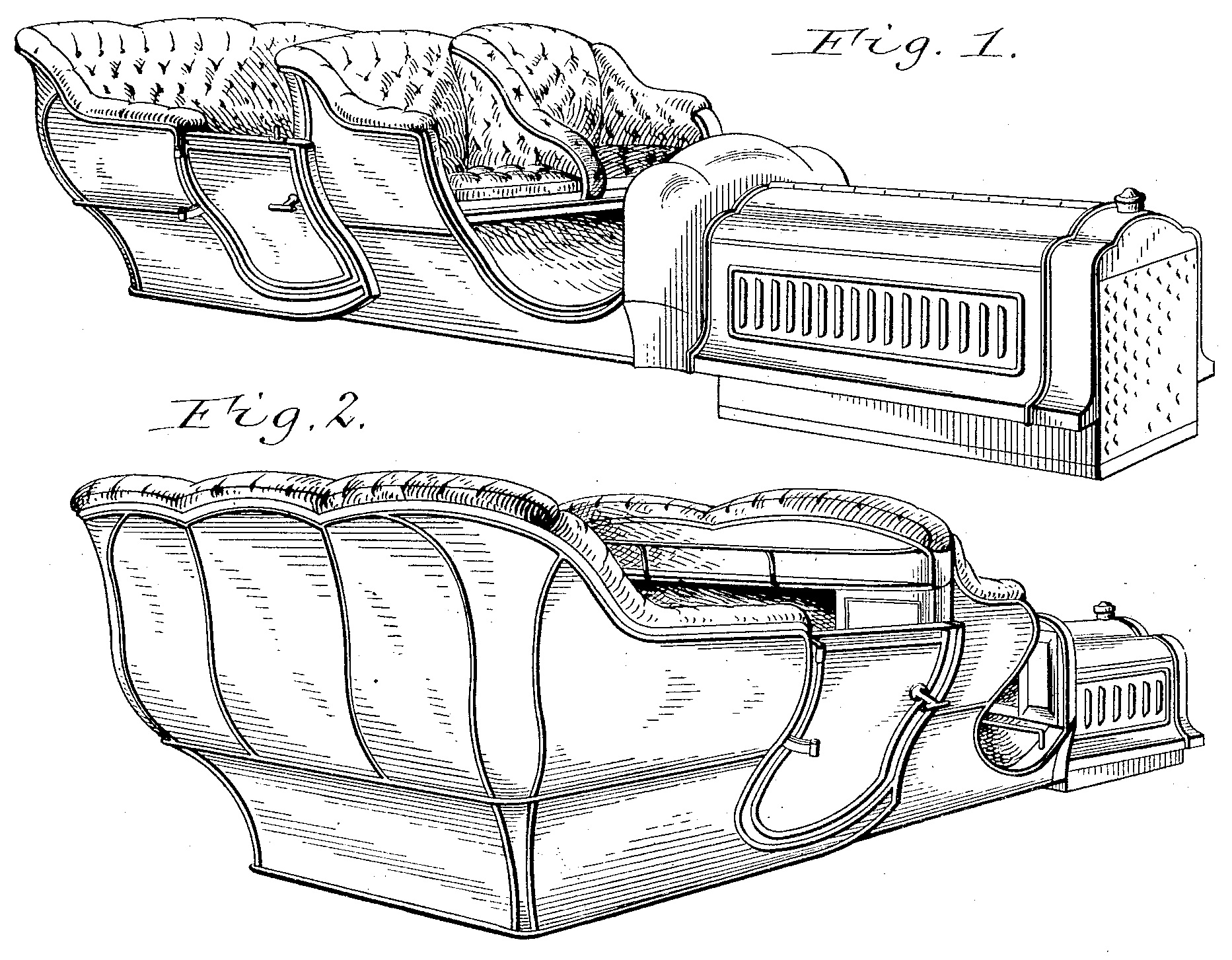
The next three images, of an unbodied test mule and very early production cars, show a shortened chain box,
and a front fender with these characteristics:
- no side lift at the front
- no side flare at the rear
- comes down vertically in the rear and creates a long running board
- rear of fender drops below riunning board
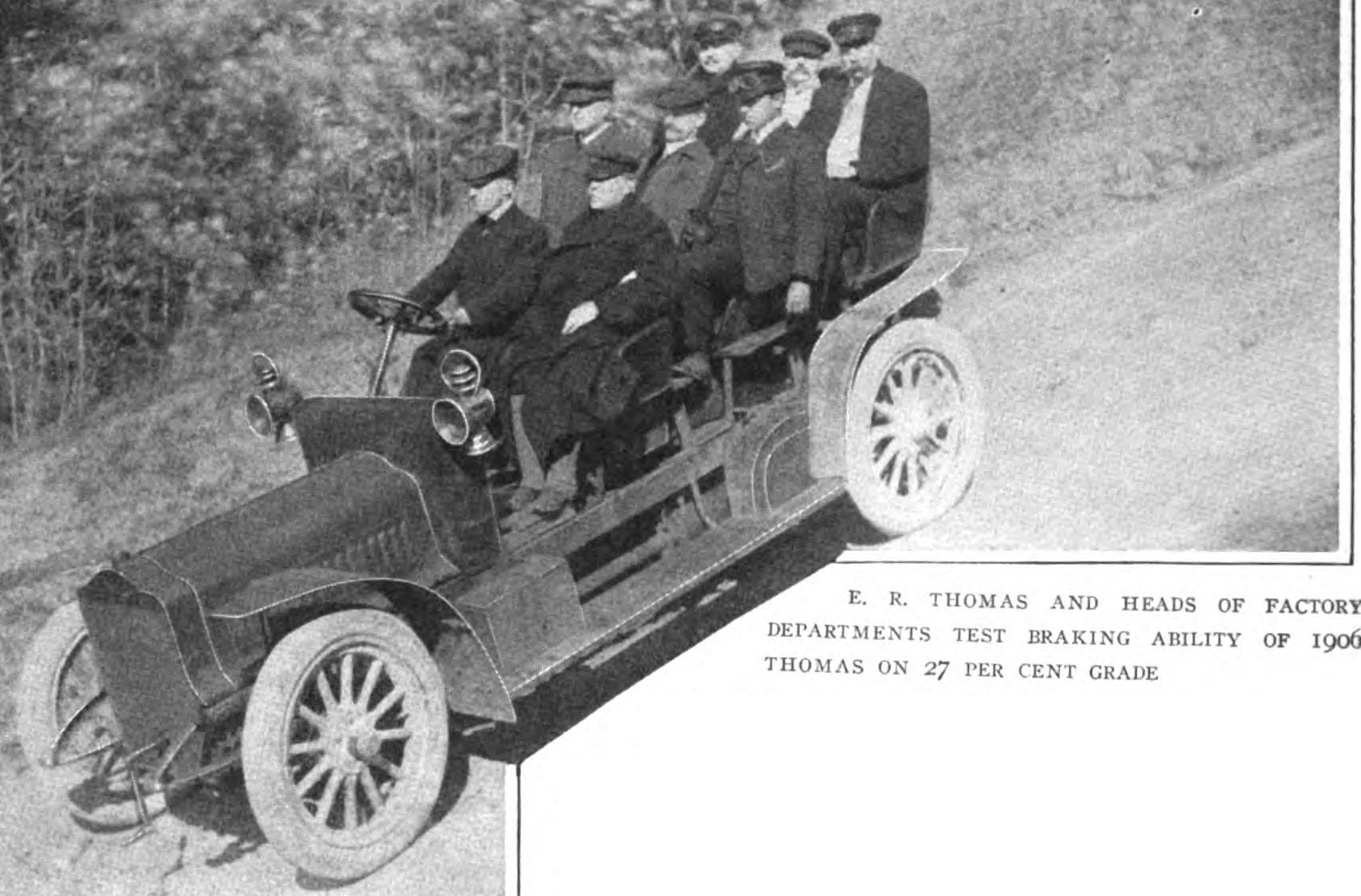
The Motor Way, Oct. 26, 1905
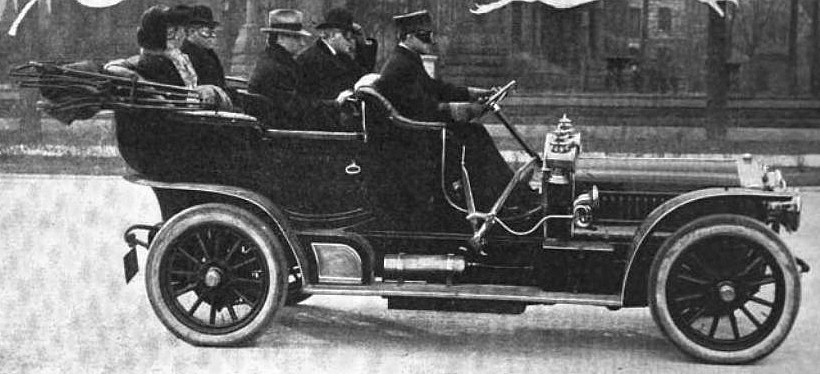
The Motor Way, Nov. 30, 1905
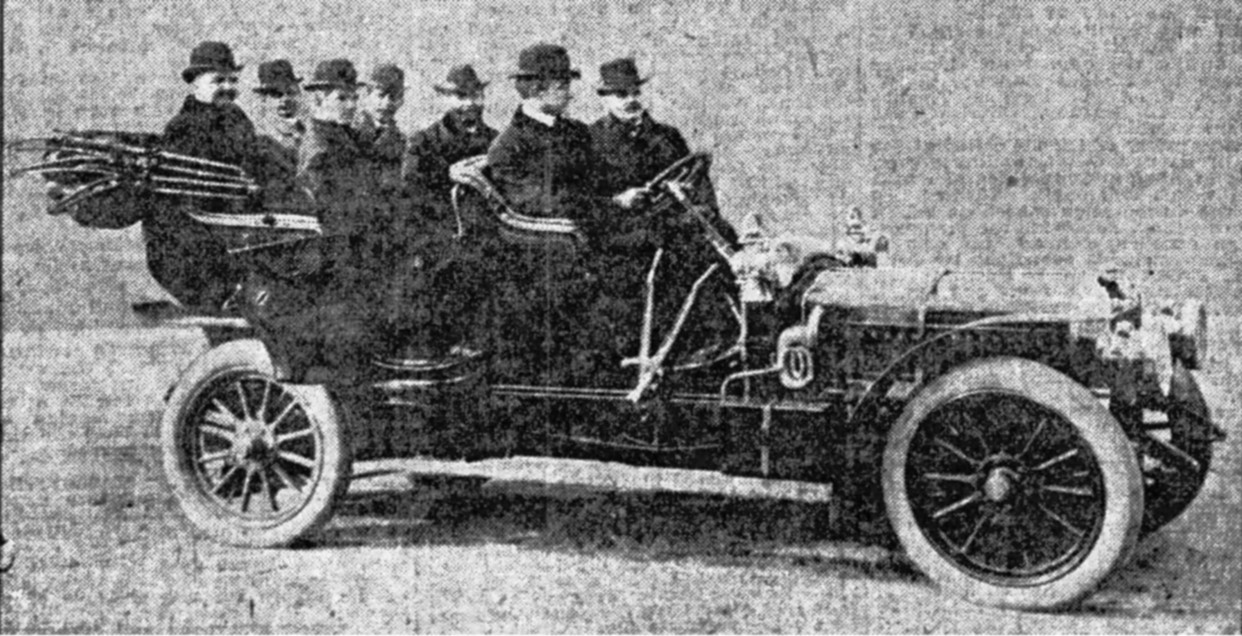
Boston Globe, Dec. 26, 1905
These two images, both from the same 1905 catalog, show the same front fender as the above photos.

Open-back jump seats

Full-back jump seats
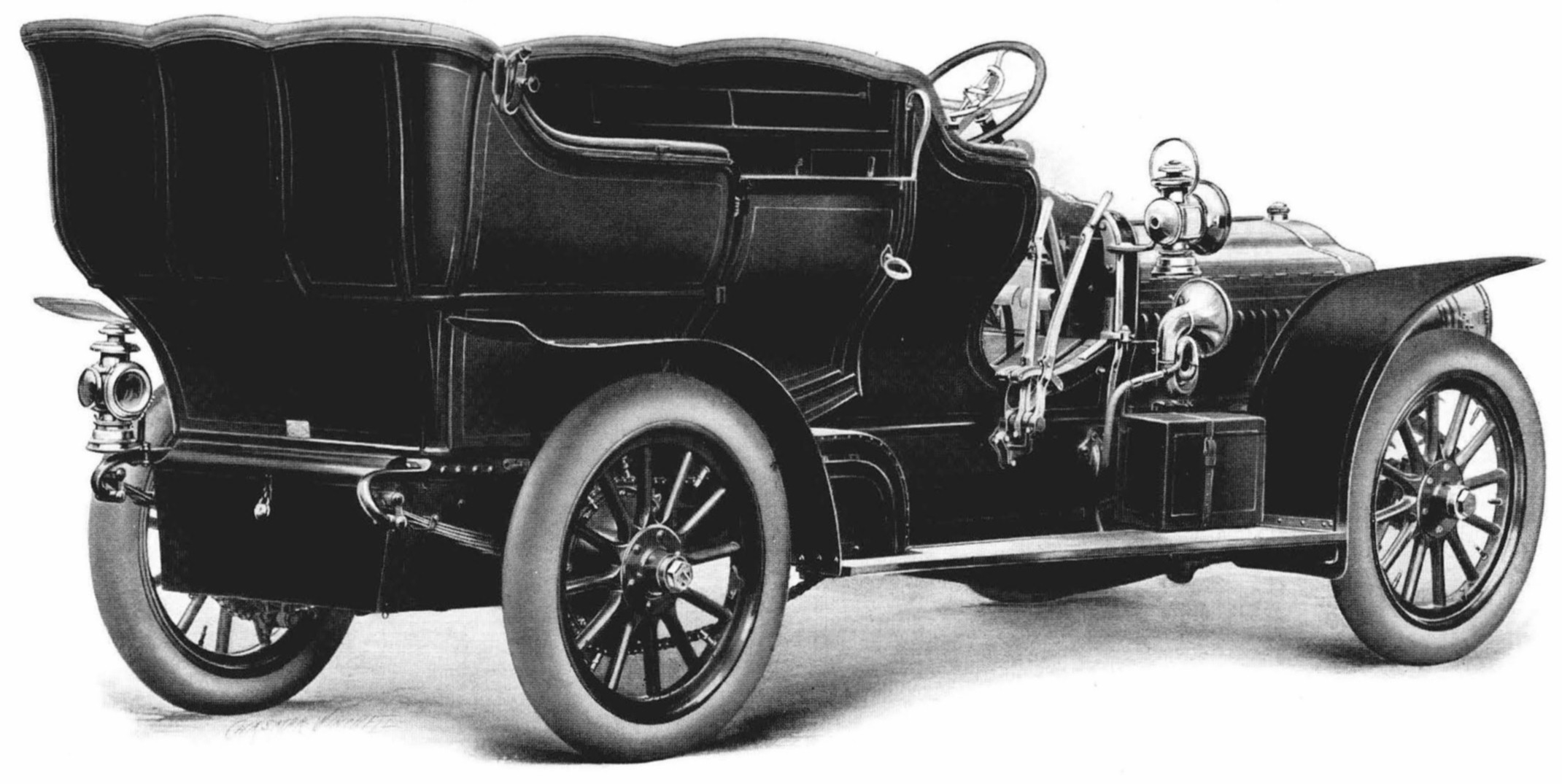
Now begins a slow transition to flared fenders - not a new idea, the 1905 cars were flared.
The flare angle of the front fender tips is all over the place.
Note also that the chainbox has been shortened even further.
The first 7 photos show a front fender that is cut off flush with the running board.
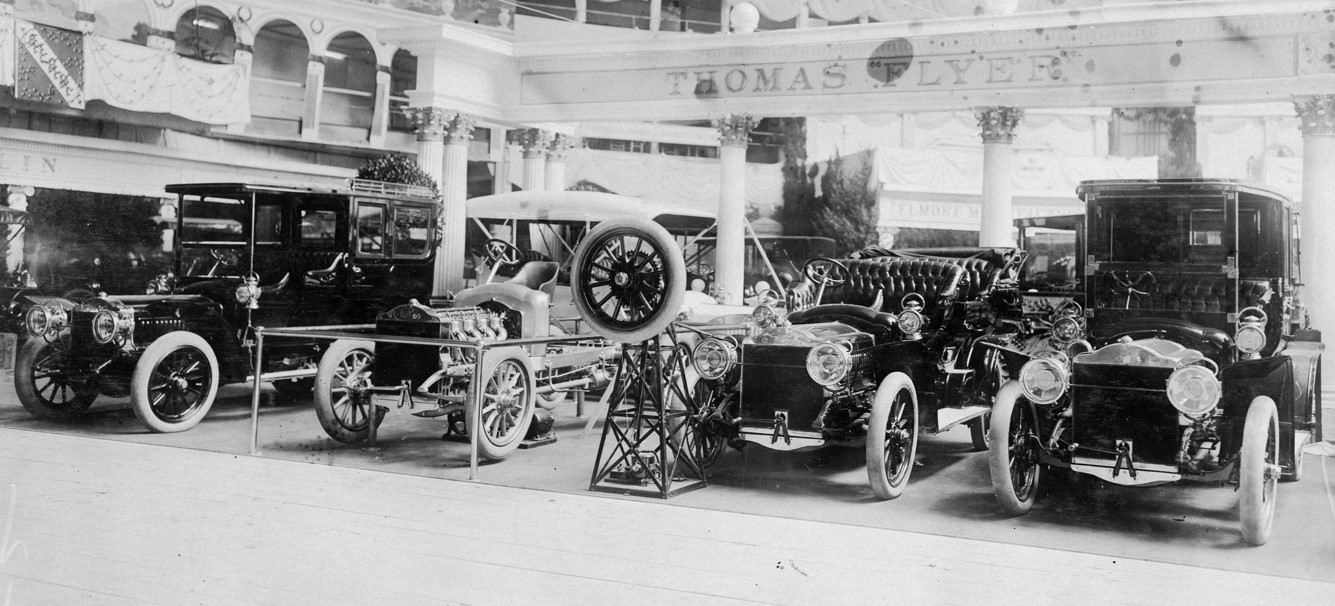
Detroit Public Library
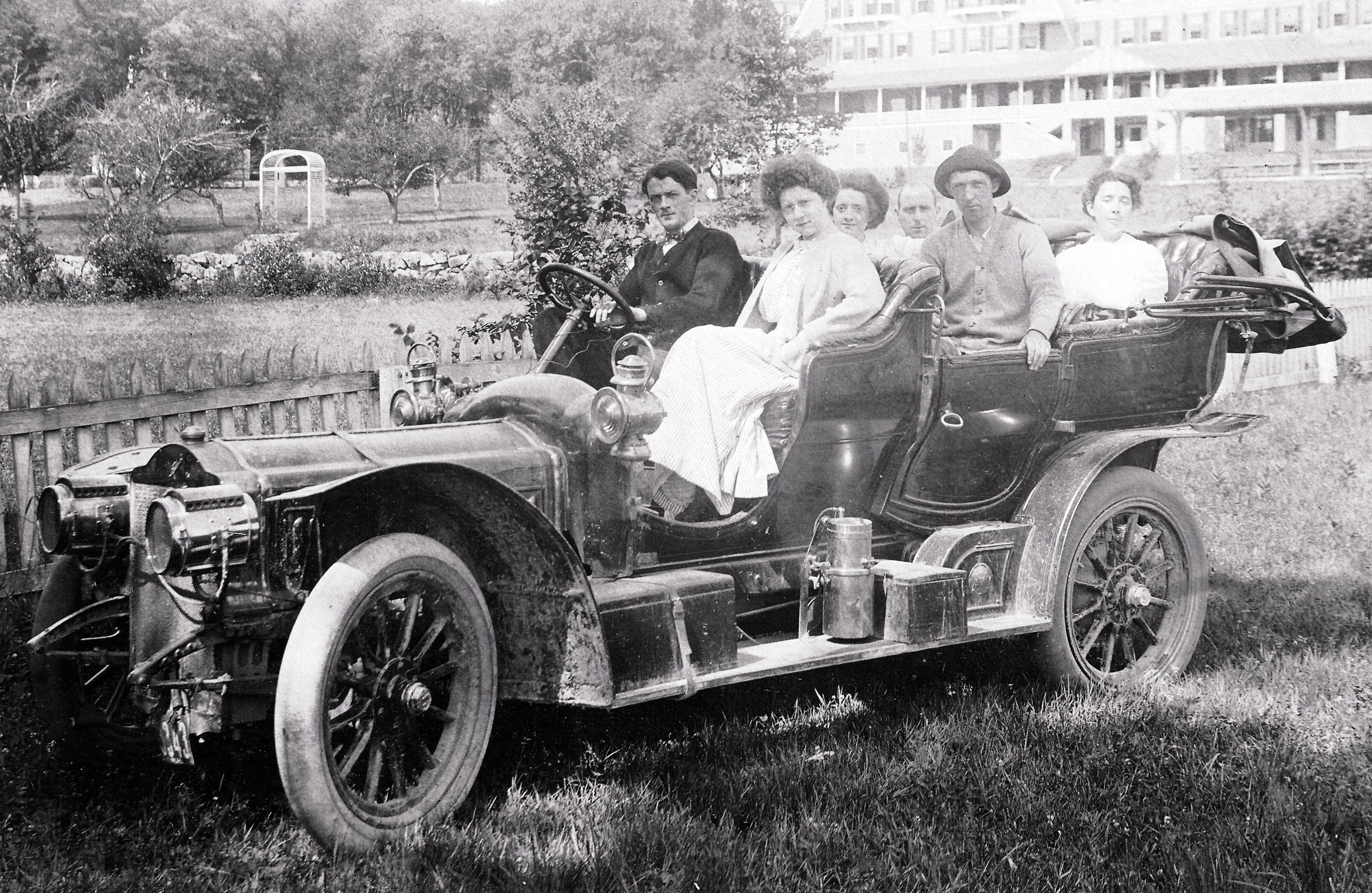
AACA Library
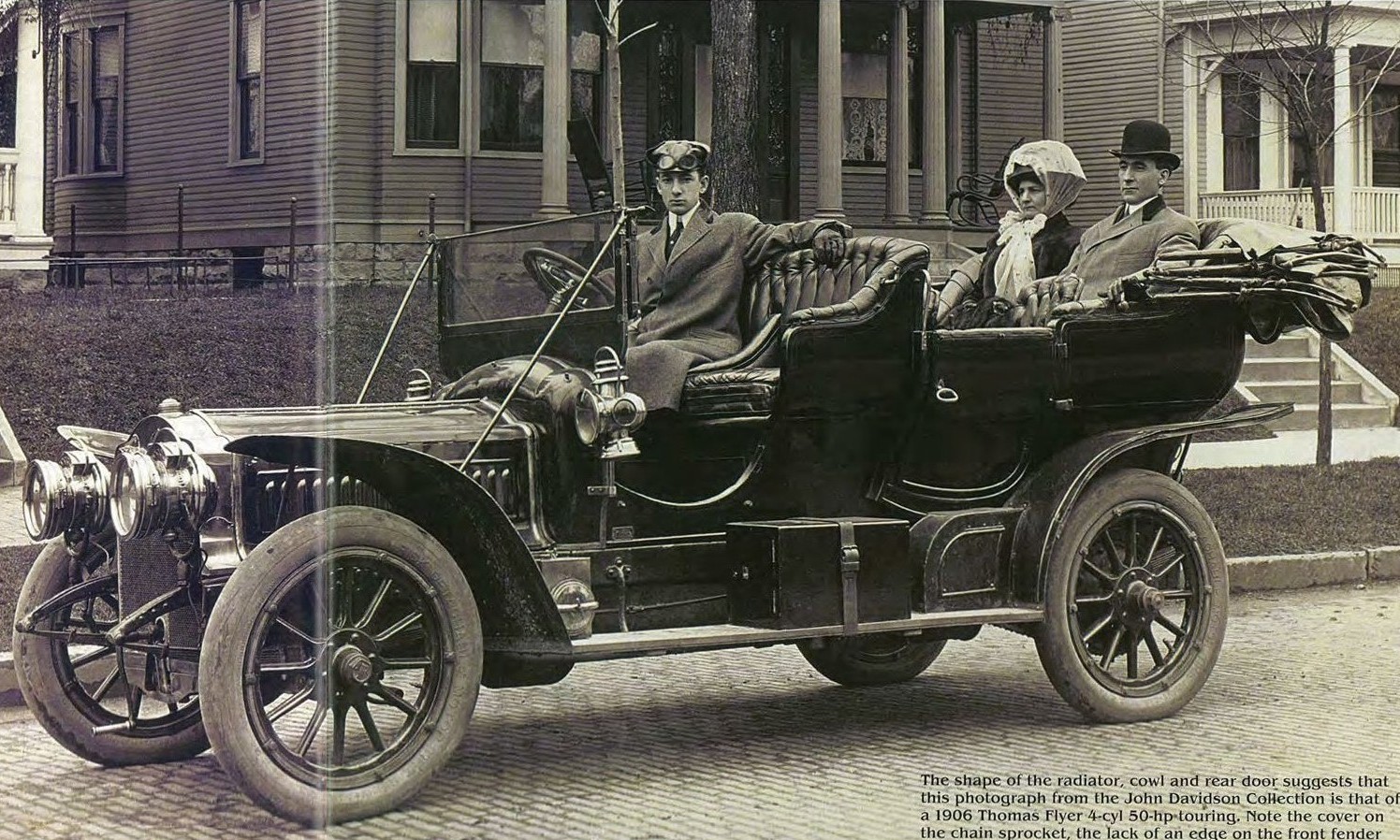
Horesless Carriage Gazette, 2011, Vol 73 #5
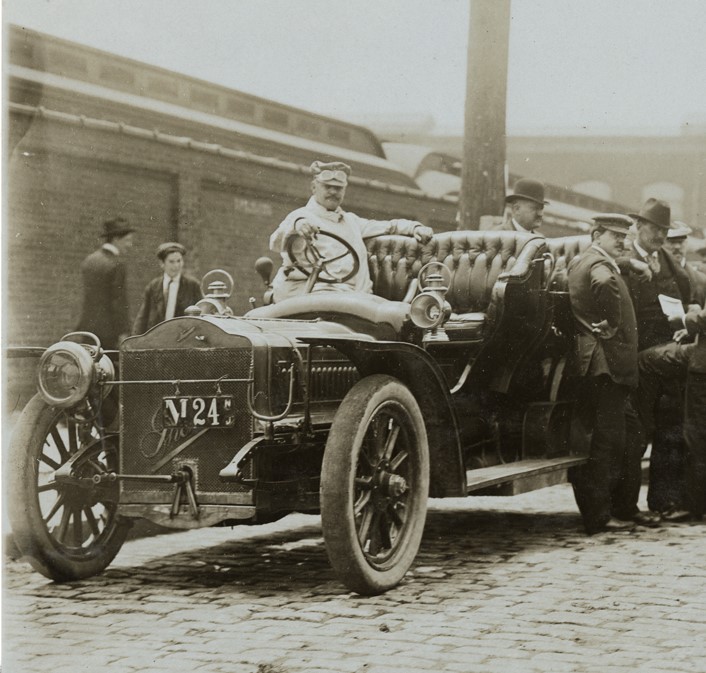
Detroit Public Library
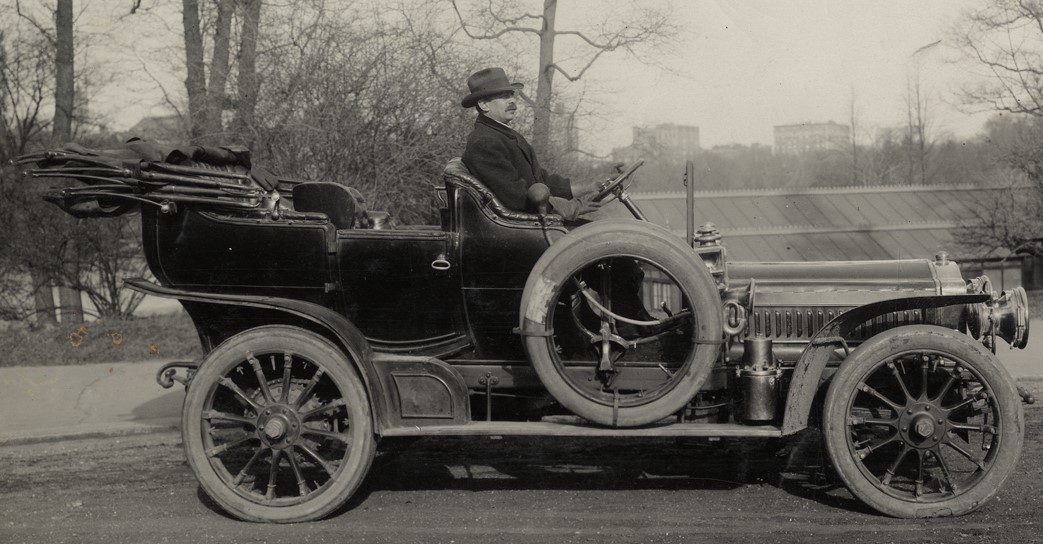
Detroit Public Library
Birdie Munger
The next 3 photos show a front fender that drops below the running board.
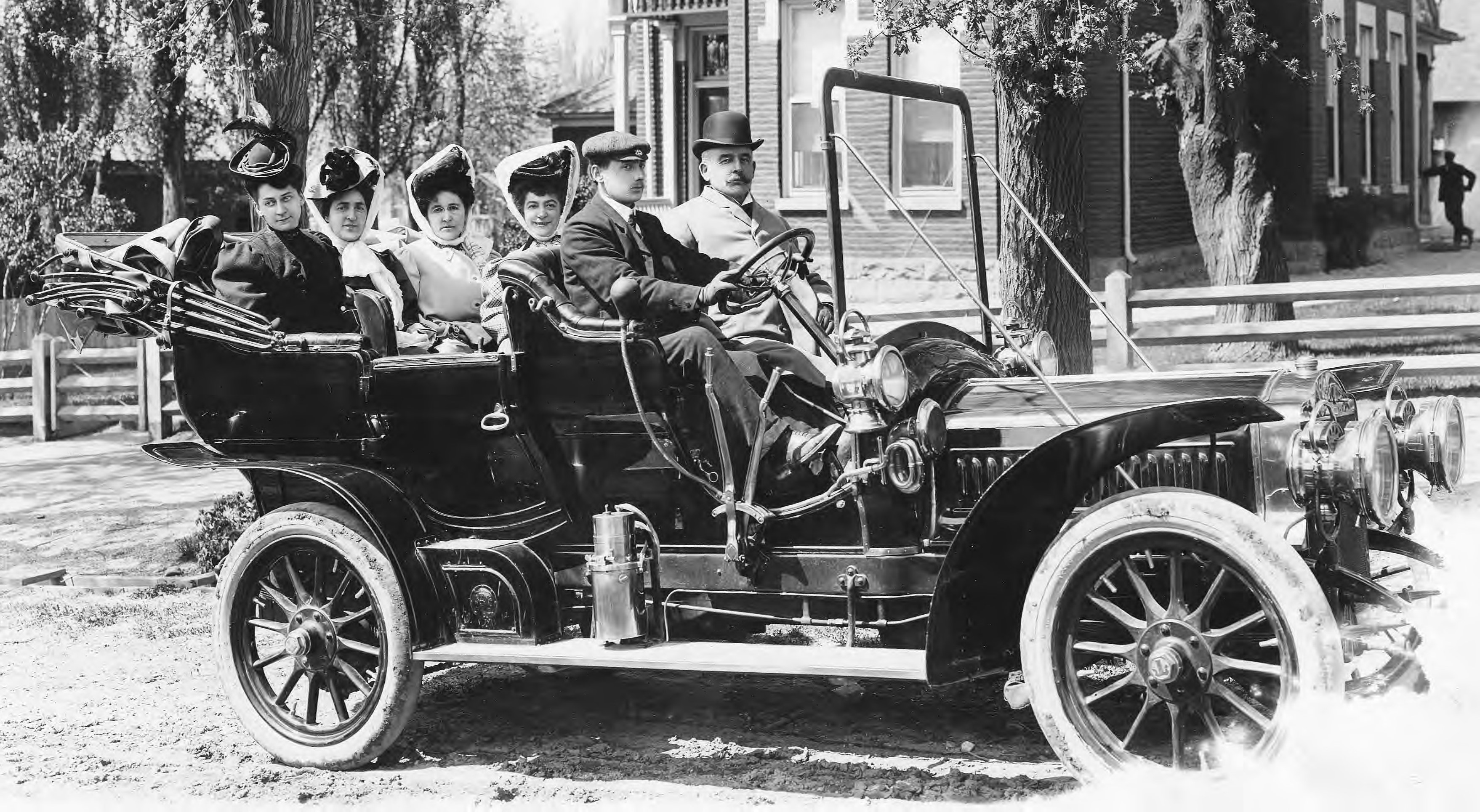
Utah State Historical Society
Jacob Moritz
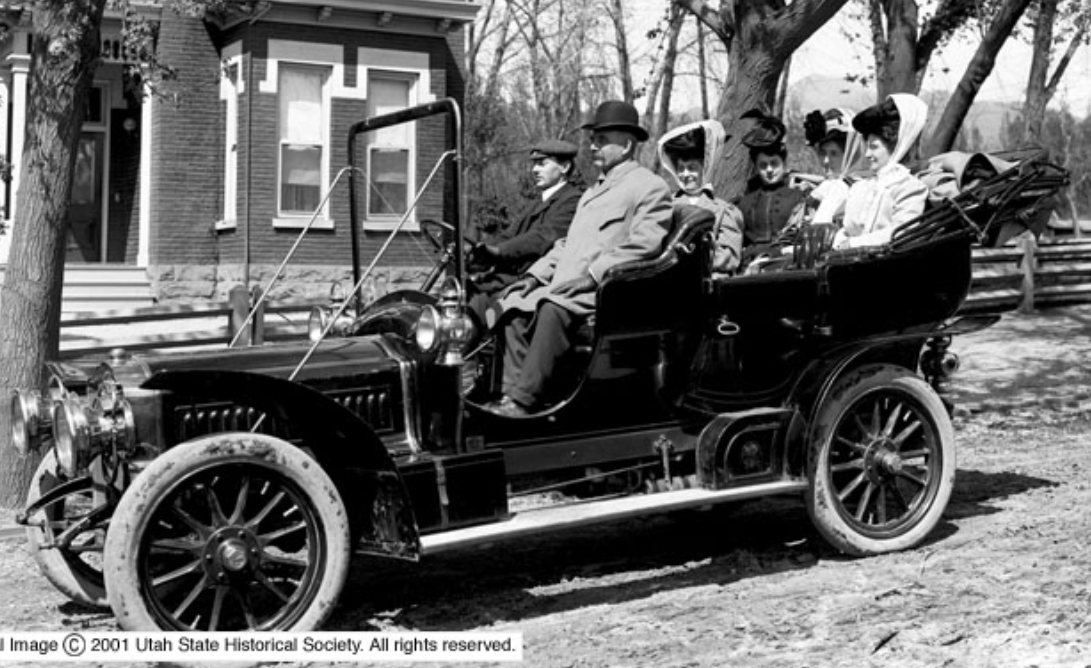
Utah State Historical Society
Jacob Moritz
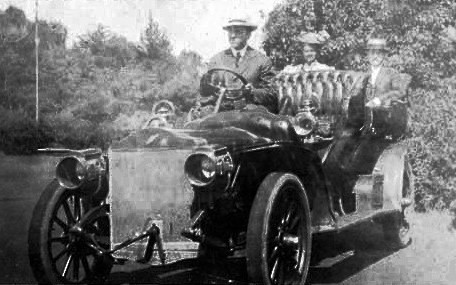
eBay
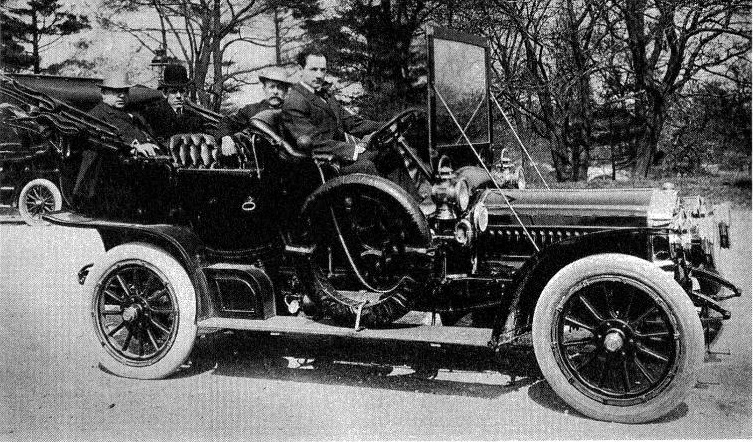
NAHC
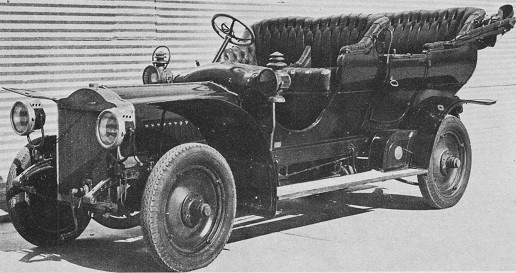
Horseless Carriage Gazette, 1960, Vol 22 #1
Not an early period photo, but this 1950s photo was taken while this car still retained its original sheet metal configuration.
Its front fenders were later modified to end flush with the running boards.
Its early-production Whitlock radiator was eventually swapped for a later-production Fedders unit,
resulting in a car that would never have been produced by the factory -.flat fenders and long-neck radiator.
Harrah's collection researchers believed this to be a demi-limousine,
although evidence for this model assihgnment is unclear.
The last 5 photos show the non-lipped front fender, but the running board end isn't visible.
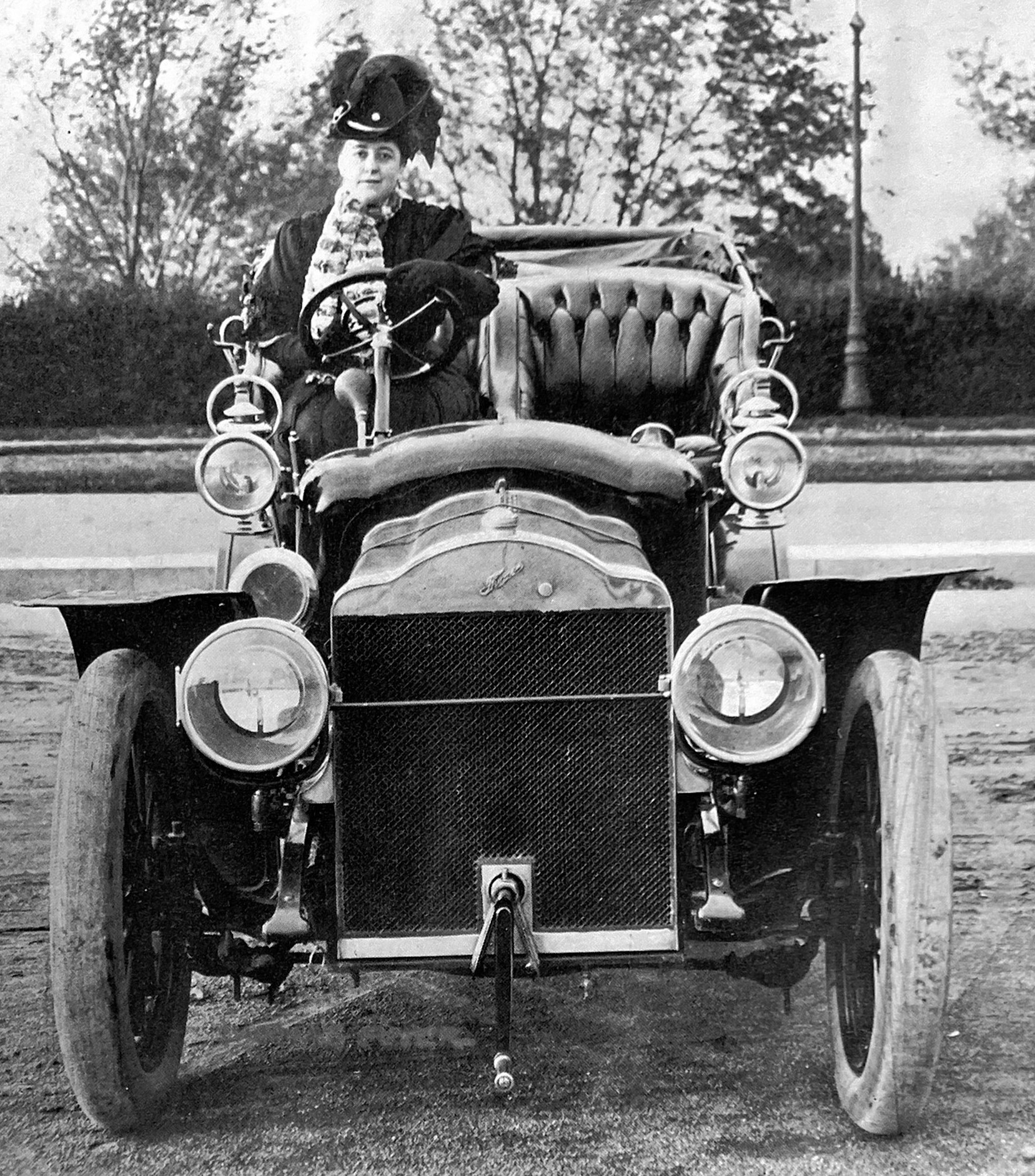
Chicago Elite, Feb. 10, 1906
C. A. Coey advertisement
Notice these fenders appear to be the same as those in the late-1905 photos above.
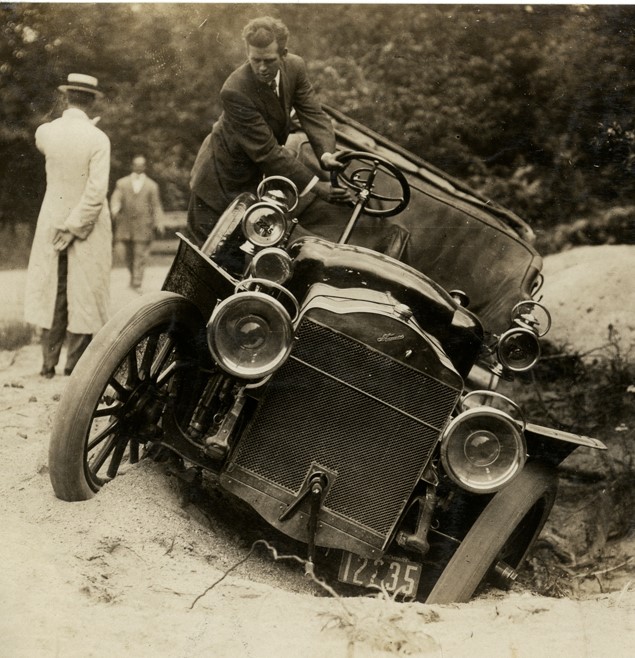
Detroit Public Library

Detroit Public Library
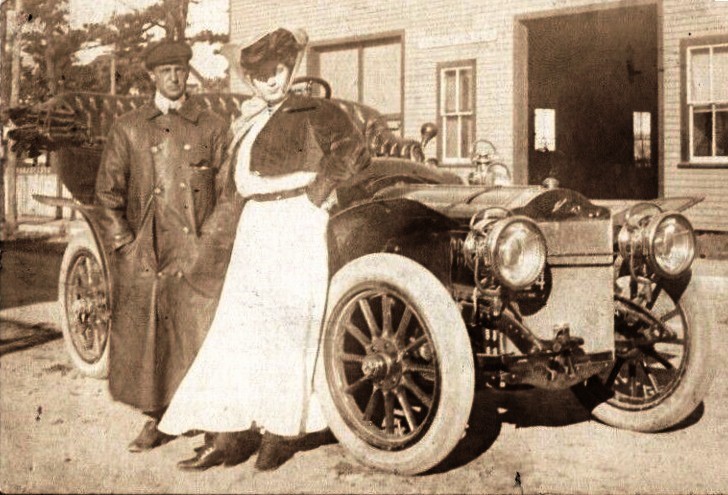
eBay
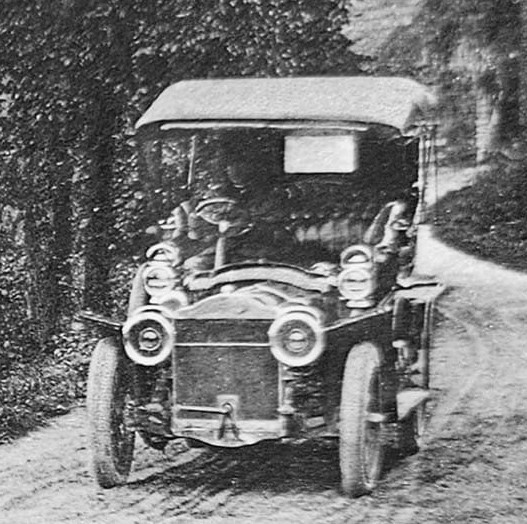
eBay
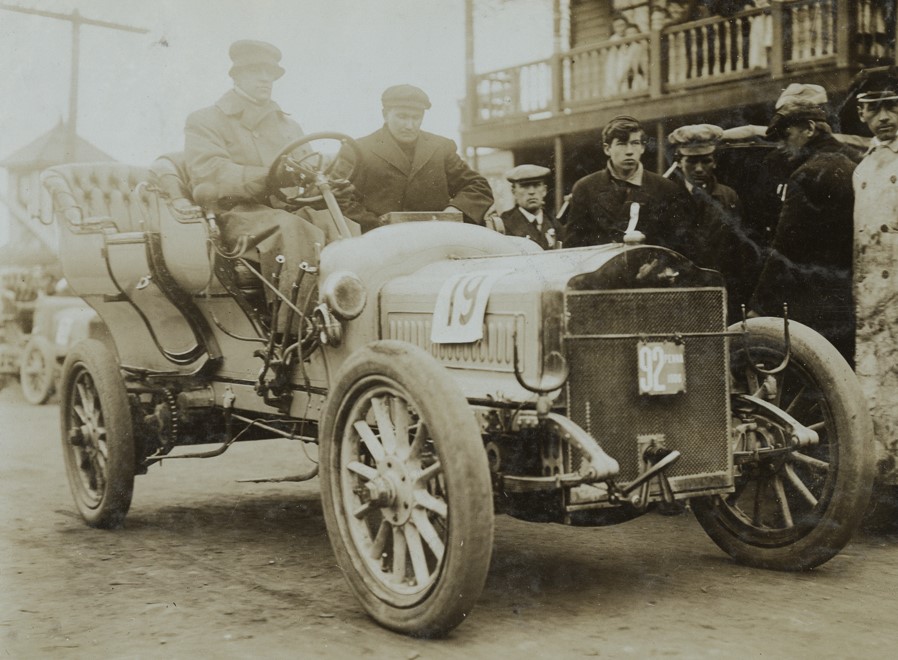
Detroit Public Library
Ernest R. Kelly, driving in Reading, PA on Sep. 29, 1906



























